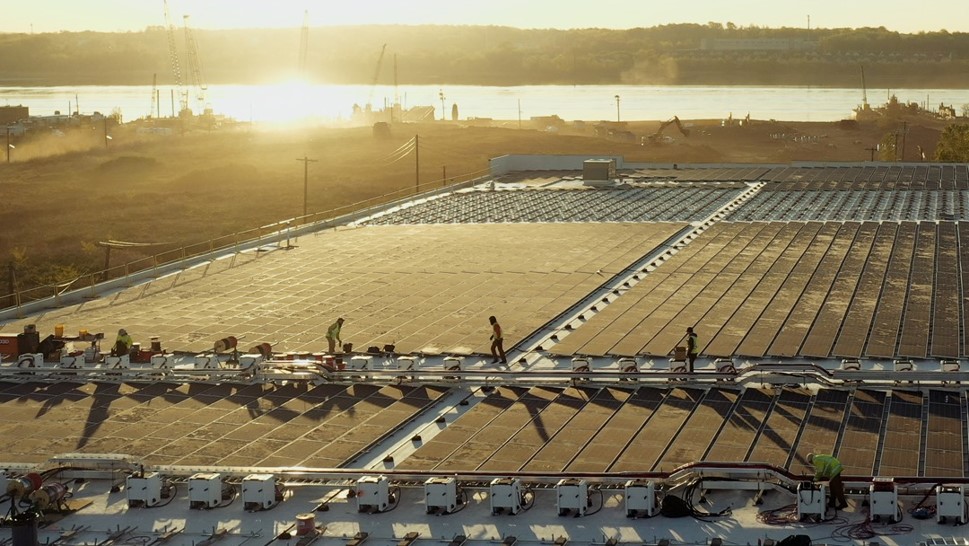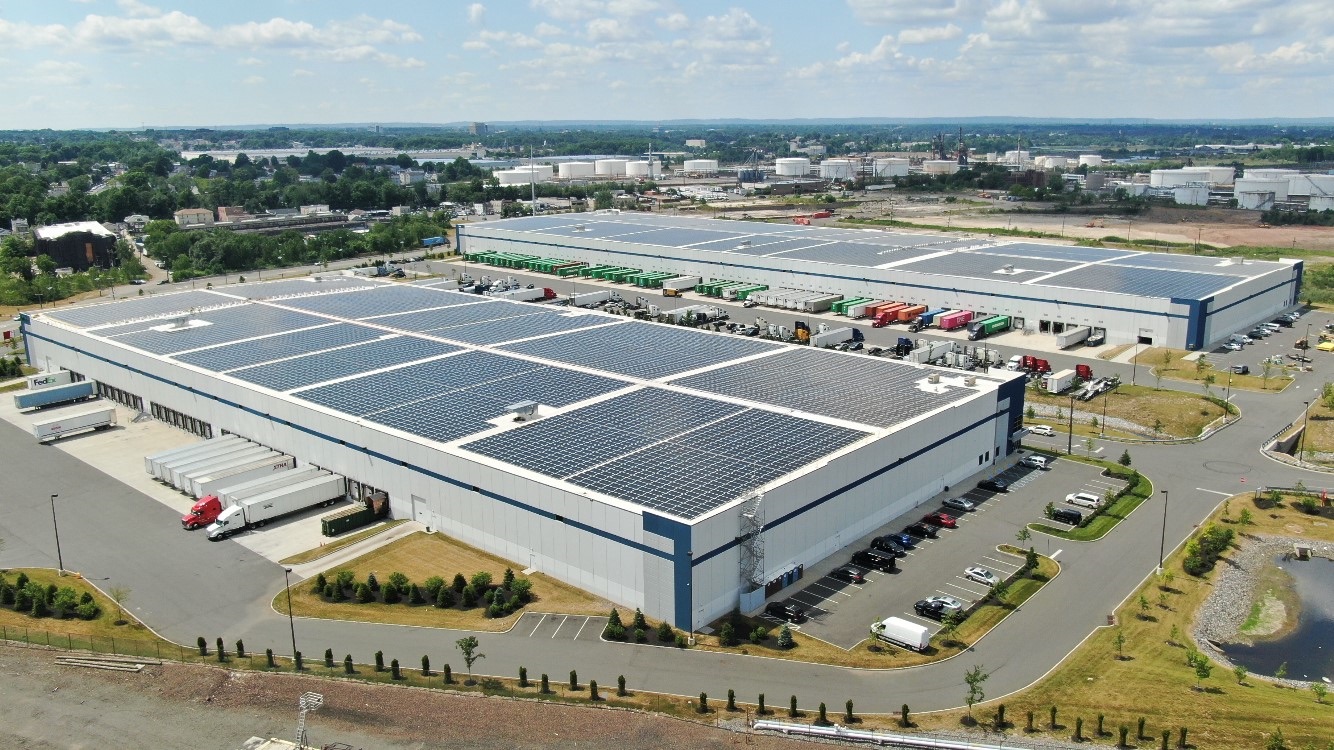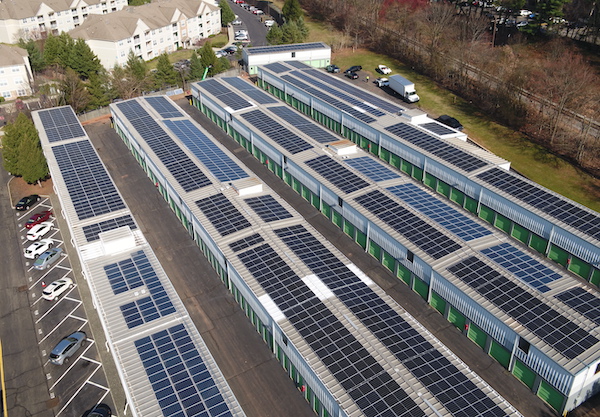Turning Commercial Rooftops into Community Solar Resources
Supply and demand for solar energy are both at unprecedented levels, which should give us all hope for our shared clean energy future. And North America’s commercial real estate owners – especially those who own buildings with large rooftops – are becoming a critical component in the supply of solar to American families.
2024 will be an inflection point for working toward our clean energy goals, especially for a new model of solar energy, community solar on commercial rooftops. Community solar addresses an important part of the demand equation: how do we make our clean energy transition equitable and available to everyone?
For commercial real estate owners, installing community solar on commercial buildings empowers business leaders to connect with their communities more deeply and optimize an untapped resource: their rooftops.

The rise of community solar
Community solar is a large solar system that allows local residents or organizations to collectively benefit from solar power generation. It offers a solution to the barriers that have historically limited solar energy adoption for residents such as high upfront costs, limited roof space, and the need for property ownership.
In 2024, community solar will see exponential growth driven by several factors.
- Economic Viability — The innovative financial model of community solar has made it easier for commercial real estate to support and host community solar projects. The projects don’t require upfront capital investment and provide an additional revenue stream for commercial real estate owners.
- Environmental Concerns — With the pressing issue of climate change, more individuals and communities are looking for sustainable energy alternatives. Community solar offers an easy way for residents to participate in clean energy that reduces carbon emissions and mitigates climate impacts.
- Policy Support — Governments at the federal and state levels have recognized the potential of community solar to help achieve their renewable energy targets.
- Community Engagement — People are increasingly drawn to the idea of local, community-driven initiatives. Community solar not only generates clean energy and reduces our reliance on polluting fossil fuels, but also fosters a sense of community and shared responsibility. Plus, since community solar expands access to renewable energy for low- and moderate-income households, there is an energy equity component to these projects which helps business leaders meet the “S” in addition to the “E” of their ESG goals.
Commercial real estate leaders have embraced community solar as a way to support environmental justice and consumer choice for residents (many of whom can be a business leader’s employees or customers) in powering their homes.

Economic benefits
As one of our most viable clean energy options, community solar projects provide a way to energize clean energy capacity quickly, without lengthy interconnection timelines or pricey transmission investments or upgrades. Beyond this, investments in community solar generate an expanded equitable green energy economy in several ways. Community solar projects have created thousands of jobs, boosting local economies. They also represent stimulating investment; by attracting private investments, community solar projects stimulate economic growth in regions where they are deployed. This includes infrastructure development and revenue generation. Finally, by creating energy savings for residents, participants in community solar programs enjoy reduced electricity costs, providing financial relief to households and businesses alike. These savings can be reinvested into the community, and signify another way that commercial real estate owners can be viewed as uplifting a local economy.
Impact on energy access
One of the most significant advantages of community solar is its potential to increase energy access for a broader demographic of Americans. In 2024, this impact will be even broader.
Low-Income Communities
Community solar projects are being developed in historically underserved neighborhoods, addressing disproportionate energy burdens and creating jobs. This enables low-income households to access affordable and clean energy, reducing their utility bills.
Renters and Multi-Family Dwellings
Renters and residents of multi-family buildings, who often cannot install solar panels on their homes, can now participate in community solar programs thanks to commercial rooftops. This ensures that more of the population can benefit from solar energy.
Small Businesses and Nonprofits
Organizations that lack the financial means or appropriate rooftops for solar installations can join community solar initiatives, lowering their operational costs. In some cases they can help promote nearby projects to their communities, creating benefits for both the organization and its neighbors.

The Future of Community Solar
The future of community solar in 2024 and beyond is bright.
Energy analysts Wood Mackenzie forecasts that “existing markets will grow by an annual average of 8% with nearly 14 gigawatts (GW) of cumulative capacity expected by 2028.” The market will continue to mature in 2024 through technological advancements like energy storage integration, community microgrids, and overall global expansion.
Community solar has emerged as a powerful force in the renewable energy landscape. As we move forward, it is essential to recognize the role that commercial business owners can play in enabling its ability to shape a greener and more inclusive energy infrastructure for generations to come.
Shaun Keegan is CEO and Co-Founder of Solar Landscape, an established U.S. rooftop commercial and industrial solar developer specializing in community solar.
Solar Landscape | solarlandscape.com
Author: Shaun Keegan
Volume: 2023 November/December









.png?r=9145)


